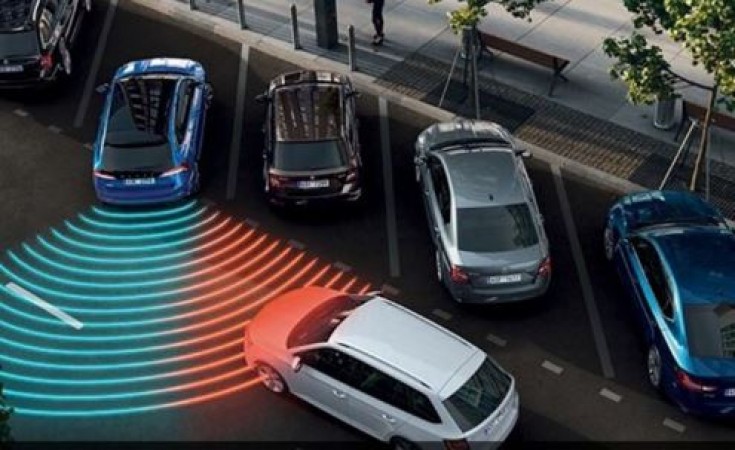
In the realm of modern technology, innovation knows no bounds, and this holds especially true for the automotive industry. Over the years, numerous advancements have been made to enhance the driving experience, one of the most notable being the evolution of car parking technologies. From cumbersome parallel parking to seamless automated systems, the journey has been nothing short of remarkable. Let’s delve into three amazing technologies that have made car parking easier than ever before.
In urban areas worldwide, the quest for a parking spot often resembles a modern-day treasure hunt. The frustration of circling the block in search of elusive parking spaces can quickly dampen the excitement of any outing. However, Automated Parking Systems (APS) offer a beacon of hope in this urban jungle. These systems, akin to robotic valets, utilize a sophisticated array of sensors, cameras, and robotics to autonomously park vehicles without the need for human intervention.
Sensors and Cameras: At the heart of APS lies a network of sensors and cameras strategically positioned throughout the parking facility. These sensors meticulously scan the environment, identifying available parking spaces with remarkable precision.
Robotic Arms: Once a suitable spot is identified, robotic arms or platforms spring into action, deftly maneuvering the vehicle into the designated space. Utilizing a combination of mechanical prowess and algorithmic finesse, these robotic assistants ensure a seamless parking experience.
Efficiency and Space Optimization: By eliminating the need for driving lanes and minimizing human error, APS revolutionizes parking efficiency and space utilization within parking structures. With vehicles neatly stacked like puzzle pieces, APS maximizes the capacity of parking facilities, alleviating congestion and streamlining the parking process.
Automated Parking Systems represent a paradigm shift in urban mobility, offering a glimpse into a future where parking woes are but a distant memory.
For many drivers, parallel parking remains a dreaded maneuver, fraught with uncertainty and anxiety. The prospect of squeezing into a tight space between two vehicles can send shivers down the spine of even the most seasoned motorists. However, Parking Assistance Systems serve as a reassuring companion on this nerve-wracking journey. These ingenious systems leverage a combination of sensors and software algorithms to guide drivers through the parking process with confidence and ease.
Ultrasonic Sensors: Embedded within the bumpers of the vehicle, parking sensors serve as the eyes and ears of Parking Assistance Systems. These ultrasonic sensors emit high-frequency sound waves, monitoring the surrounding environment for obstacles and potential hazards.
Maneuvering Guidance: Armed with real-time data from parking sensors, Parking Assistance Systems provide drivers with invaluable guidance as they navigate into tight parking spaces. Through a combination of visual and auditory cues, these systems offer step-by-step instructions, ensuring precision and safety throughout the parking maneuver.
Enhanced Safety: By alerting drivers to potential collisions and obstacles, Parking Assistance Systems mitigate the risk of accidents and minimize the likelihood of property damage. With an extra layer of safety and reassurance, drivers can approach parallel parking with newfound confidence, free from the fear of mishaps.
Parking Assistance Systems represent a marriage of technology and convenience, empowering drivers to conquer parallel parking challenges with ease.
In the age of smartphones and digital connectivity, the landscape of urban mobility is undergoing a profound transformation. Smart parking apps have emerged as a beacon of convenience for drivers navigating the urban sprawl, offering real-time insights and navigation assistance at their fingertips. These innovative mobile applications leverage the power of GPS technology and data analytics to provide users with a seamless parking experience.
Real-Time Parking Availability: Armed with real-time data from sensors embedded within parking facilities, smart parking apps offer users invaluable insights into parking availability. By displaying live updates on vacant parking spaces, these apps empower drivers to make informed decisions and optimize their parking strategy.
Navigation and Directions: Smart parking apps go beyond mere information dissemination, providing users with turn-by-turn navigation to the nearest parking facility. With intuitive mapping features and route optimization algorithms, these apps ensure a hassle-free journey from curb to parking spot.
Payment Integration: The convenience of smart parking apps extends beyond parking guidance, encompassing seamless payment integration. By enabling users to pay for parking directly through the app, these platforms eliminate the need for cash or physical payment methods, streamlining the parking process from start to finish.
Smart parking apps epitomize the fusion of technology and convenience, empowering drivers to navigate the urban landscape with confidence and efficiency. The evolution of car parking technology represents a testament to human ingenuity and innovation. From Automated Parking Systems that revolutionize parking infrastructure to Parking Assistance Systems that demystify parallel parking, and Smart Parking Apps that offer real-time insights and navigation assistance, these advancements have transformed the parking experience for drivers worldwide. As technology continues to evolve, we can expect further innovations that will redefine the future of urban mobility. In a world where every parking spot counts, these amazing technologies pave the way for a more efficient, convenient, and stress-free parking experience.
These things offered to Maa Durga are a boon for health
World Voice Day: What Is the Quest for Vocal Wellness?
Be careful if you eat white bread for breakfast, know its disadvantages before eating